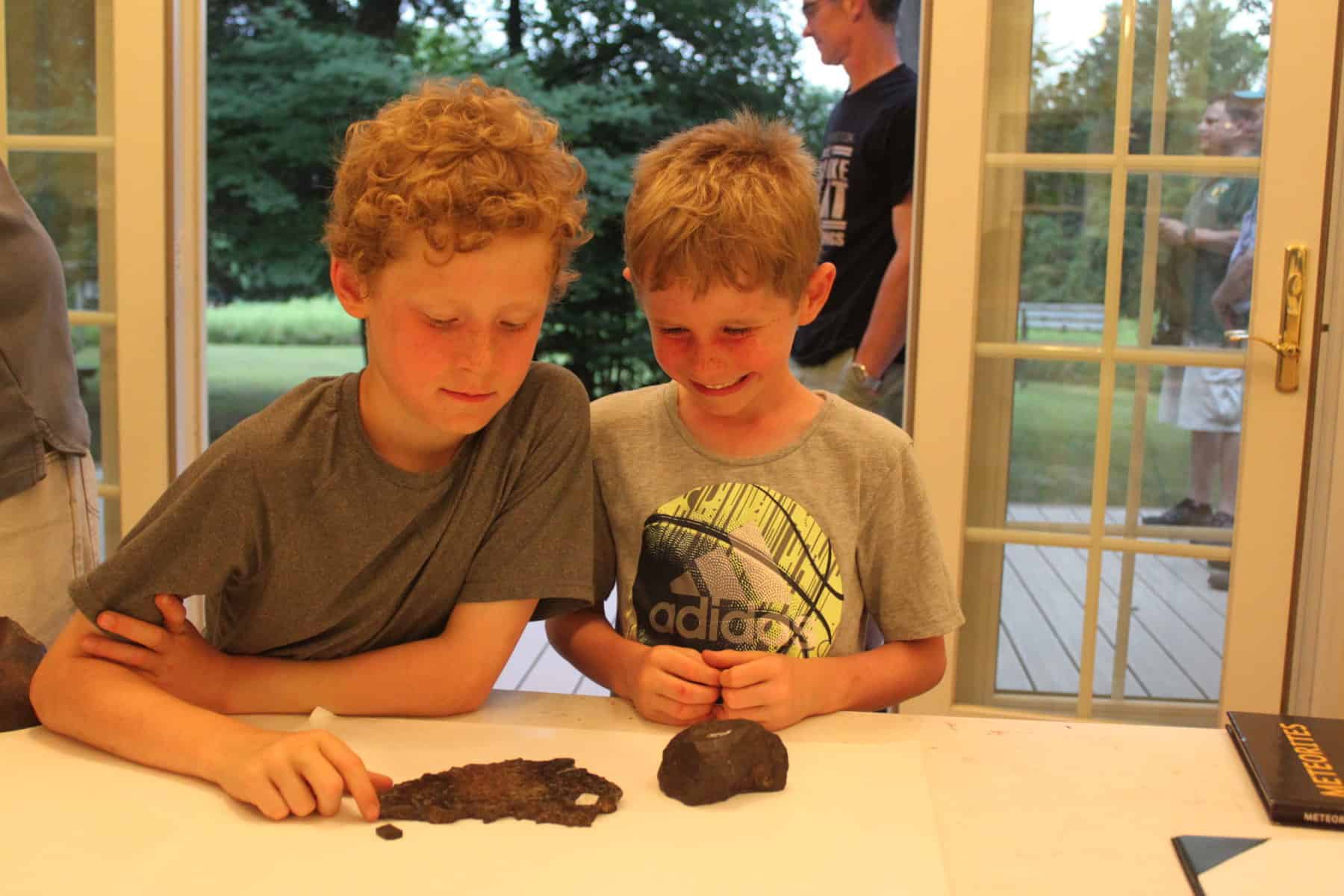Rocks really do fall from the sky. They are called meteorites.
That’s what Callan and Garrett Holmes learned at the Anne Demarais Nature Center’s “Tuesday Family Fun Night” July 12. The nature center is at the end of Drexel Avenue in Lawrence.
Thomas Duffy, a Princeton University geosciences professor, explained the origins of rocks from space to the two boys, ages 9 and 7. The Lawrence residents were among 20 budding geologists at the event.
Duffy brought along a few meteorites from Princeton University’s collection for the attendees to handle.
“It’s the oldest thing you’ll ever touch. They are 4.5 billion years old,” Duffy said of the meteorites.
Meteorites come from the asteroid belt between Mars and Jupiter, but a few come from Mars or the moon, Duffy said. The asteroid belt, which is about 100 to 200 million miles away from Earth, is made up of rocky objects.
The rocky objects in the asteroid belt sometimes collide with each other, causing some of them to be launched out of the asteroid belt, Duffy said. By chance, some of them enter the Earth’s orbit.
Meteorites come in three varieties – stony, iron and stony-iron, which is a mixture of rock and iron, he said. About 80% of the meteorites that come crashing to earth are stone, and another 20% are iron. Less than 1% are stony-iron, he said.
Iron meteorites are rare, because they rust away, Duffy said. Iron meteorites that survived were used by ancient people because iron was not easily found. A dagger in the tomb of the Egyptian pharaoh, King Tut, is made of iron from a meteorite, he said.
Dozens of meteorites fall to the earth every year, Duffy said. Most meteorites are small, but there are about 200 known craters from large meteorites that struck the Earth, he said.
One of the largest craters is the Chicxulub Crater on the Yucatan Peninsula in northern Mexico, he said. The crater is 100 miles in diameter and about 12 miles deep. It occurred 65 million years ago.
There is another meteor crater near Winslow, Ariz., Duffy said. It is less than one mile in diameter and 750 feet deep. It is about 50,000 years old. It was formed by an iron meteorite that was traveling at three million miles per hour when it struck the Earth, he said.
Although meteorites have been found for thousands of years, it was only in the 1800s that people began to make the connection between rocks falling from the sky and meteorites when people started tracking where the rocks came from, he said. People used to think that the rocks came from a volcano, he said.
“At that point, people put two and two together and rocks falling out of the sky was finally accepted,” Duffy said.
The best place to find a meteorite is in the desert, he said. They have been found in deserts in Morocco and in the Mojave Desert, which spans an area between southeastern California, southern Nevada and smaller parts of Utah and Arizona.
Meteorites also have been found in Antarctica, Duffy said.
“If you see a rock on the ground in Antarctica, you can be pretty sure it came from space. There are no rocks in Antarctica. Scientists drive snow mobiles across Antarctica to find them,” he said.
Duffy said there is no record of a person being killed by a meteorite.
A dog in Egypt was struck by a meteorite and killed, but that is the only known example of a death caused by a meteorite, he said.
A meteorite crashed through the roof of a house and landed on the bed next to a woman who was asleep, he said. A car was struck by a meteorite, and its owner initially thought the damage was caused by another car crashing into it, he said.

